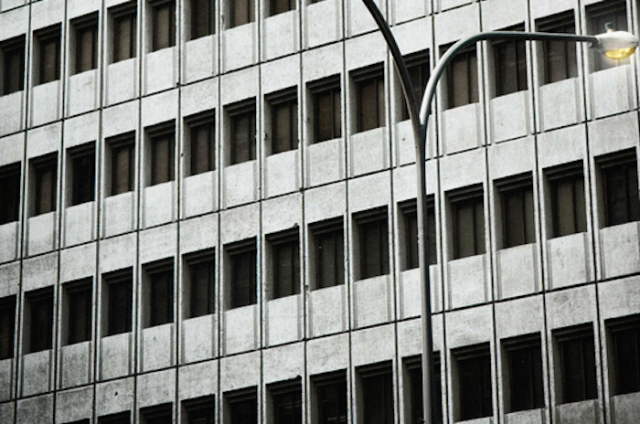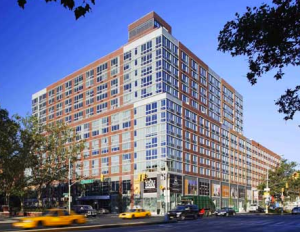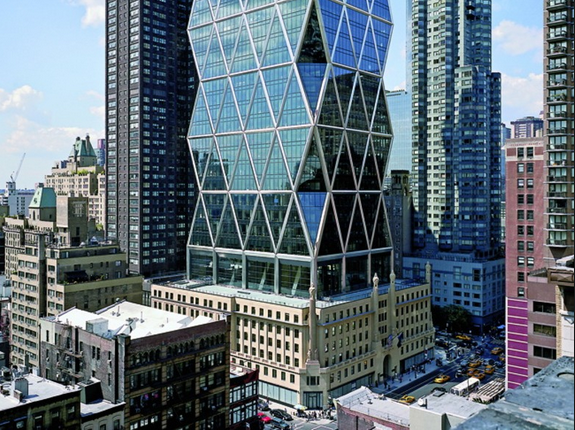
Unidentified building atop New York Magazine article. (Phllip Laurell/Getty)
Several people have sent me “The Psychological Cost of Boring Buildings,” by Jacoba Urist in New York Magazine. The title hooked me, of course, but her essay hardly went down like an oyster. First, I am distrustful of “studies,” especially studies that claim to assess our interior state of mind. Predictably, the article strung together a bunch of studies and books that argued that dull architecture and streetscapes were not as stimulating as architecture and streetscapes that had a jumble of complexity, whether beautiful or not.

Whole Foods, NYC. (brooklynbrewery.com)
The building in the photograph at the top of the article seems to say it all. If only Urist had addressed that building and called it quits. But it remains unnamed and undiscussed. Instead, she proceeds to focus her ire on a new, bad-trad Whole Foods building on Houston Street, which she seems to find the epitome of boring. It is poorly done, granted, but not nearly as ugly or boring as the building on top. She refers to buildings and streets that trigger ADD or ADHD responses – or “severe case of modern life.” But why must we accept such irksomeness as intrinsic to modern life?
Urist concludes unhappily, pointing to Norman Foster’s Hearst Tower as an example of a building that balances under- and over-stimulation. Suddenly mentioning beauty, a concept that had gone unaddressed throughout the article, she writes that “new architecture can achieve the optimal level of cacophony and beauty.” Maybe she intended to praise the elegant Art Deco base, completed in the late ’20s, and deplore the tower Foster plopped on top of it in 2006. Passersby are not likely to be “bored” by it, she insists.

Base of Hearst Tower. (arcspace.com)
Perhaps the reason this article and its collection of studies seems to miss the point is that it fails to cite beauty as part of the equation. Beauty soothes the savage breast; variety does not, and neither do ugliness or boredom. But architects do not like to talk about beauty, which, they say, is in the eye of the beholder so just chuck it out of the discussion. But its absence leaves a big hole. Filling that hole would tie up a lot of loose ends in the article and the broader discussion of why so much of our built environment leaves us cold.
We are not talking rocket science here, and we don’t need surveys to expose home truths that most regular people already understand.
The Hearst Tower, which is for some curious reason not pictured in the NYM article, has a beautiful base and an ugly shaft. That is, it is off-putting from afar and more pleasant as you approach. Maybe this is the balance that Urist finds so compelling. But I suspect it would be even more compelling if it were beautiful from top to bottom.

Hearst Tower as completed in 2006. (central-nyc.com)



“so much of our built environment leaves us cold.”
You’re not kidding. I went to my allergist the other day. He has an office at the junction of Rt’s 115 and 117 in Warwick, within sight of the four corners in Apponaug. This is prime, 5 star-rated crudscape in my opinion. Sitting there waiting, I looked out on it all, I find it a soul crushing landscape and experience.
LikeLike
Thanks for standing up for what Claude Bragdon called the ‘beautiful necessity.
LikeLike
Steve, my pleasure! Can you expand on that a bit?
LikeLike
Forget the building; I just hate Whole Foods.
LikeLike
I guess that’s similar to hating Google, yes, Rick? Well, I preferred the name Bread & Circuses, to be sure.
LikeLike